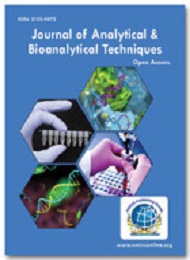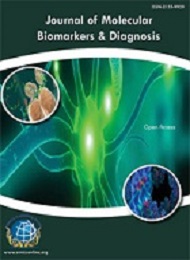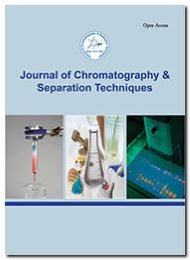Theme: Exploring the Widespread Applications of Chromatography and Unveiling Advances in HPLC
Advanced Chromatography 2023
Advanced Chromatography 2023 organizing committee invites analytical expertise, researchers, professors, scientific communities, delegates, students, business professionals and executives to attend the “15th International Conference & Expo on Chromatography Techniques” which is to be held during January 30-31, 2023 at Barcelona, Spain.
In the light of this theme, the conferenceseries aims to provide a forum for international researchers from various areas of Analytical chemistry , pharmacy, pharmacology, bioinformatics and other life science groups by providing a platform for critical analysis of new data, and to share latest cutting-edge research findings and results about all aspects regarding advances in HPLC and Chromatography techniques.
The conference provides a platform to detail the research works of analytical expertise from various scientific backgrounds and the same can be perceived by young researchers and students. The conference mainly aims to promulgate knowledge on chromatography and unveil the advances in HPLC techniques. Both Life Sciences and Chemical Sciences need analytical techniques in course of research work and therefore Advanced Chromatography 2023 would be a perfect venue to share and develop knowledge on key analytical tools.
Target Audience:
- Analytical experts in chromatography
- Research Heads from Research Centres
- Leads from Pharmacy and Chemical Industries
- Industrial expertise working with various novel solid & liquid columns
- Marketing teams of Industries with novel products to show case at the conference
- Directors and Professors from Universities and Institutions
- Post-doctoral & PhD students working on analytical & Bio-analytical method development
- Theoretical scientists working on deriving analytical hypotheses
- Relevant Graduate and Post graduate students
The global life science and chemical instrumentation market is expected to reach $48.84 billion by 2020, at CAGR of 6.9%. Technological advancements in the analytical instruments, rising government spending on pharmaceutical R&D in emerging nations, increasing public and private life science research and development expenditure, growing food safety concerns, and progressing drug discovery and clinical diagnostics field are the key factors driving the growth of life science and chemical instrumentation market. Furthermore, growing proteomics market, rising environmental safety concerns, and increasing demand of analytical instruments from applied markets are some of the key factors offering new growth opportunities for the market players. The Europe Liquid Chromatography Reagents market is estimated to grow at a CAGR of 11.9% from 2015 to 2023. The market growth is fuelled by extensive use of chromatographic techniques in every minute analysis.
Conferenceseries organizes 1000+ Global events every year across the globe with support from 1000+ more scientific societies and Publishes 500 Open access journals which contains over 50000 eminent personalities, reputed scientists as editorial board members.
With great keenness, we look forward to seeing you at Advanced Chromatography 2023
Young Scientist Benefits
- Our conferences provide best Platform for your research through oral presentations.
- Share the ideas with both eminent researchers and mentors.
- Young Scientist Award reorganization certificate and memento to the winners
- Young Scientists will get appropriate and timely information by this Forum.
- Platform for collaboration among young researchers for better development
- Award should motivate participants to strive to realize their full potential which could in turn be beneficial to the field as whole.
Track 1:- Major Chromatographic Techniques
Chromatography basically is a method of separation of compounds from a mixture. The technique is both analytical and preparative and is employed widely in industries as well as in laboratories. Chemical analysis is mostly done all over the world with chromatography or any other various techniques related to chromatography. Chromatography is a physical technique and has a vast application in chemical field starting from basic analytical chemistry to forensic science.
Some major chromatography techniques are:
Column chromatography is a method used to purify individual chemical compounds from mixtures of compounds. It is has preparative applications on scales ranging from small scale to large scale production. Relatively low cost and disposability of the stationary phase are the main advantages of column chromatography.
Paper chromatography involves placing a small dot or line of sample solution onto a strip of polar cellulose chromatography paper. The paper is placed in a glass chamber with a shallow layer of solvent and is sealed. As the solvent moves through the paper, it comes in contact with the sample mixture, which starts to rise up the paper with the solvent.
Thin layer chromatography (TLC) is a mostly used technique which involves a stationary phase of a thin layer of adsorbent like alumina, silica gel, or cellulose on a flat, inert layer of substrate. Advantages of TLC are better separations, faster runs, and the choice of different adsorbents. Better quantification and resolution can be achieved with high-performance TLC.
Displacement chromatography is a preparative technique in which a sample is placed onto the head of the column and is then displaced by a solute that is more strongly adsorbed than the components of the original mixture. As a result the components are resolved into consecutive rectangular zones of highly concentrated pure substances rather than solvent-separated peaks.
Gas chromatography (GC) is commonly used in analytical chemistry for separating and analysing compounds that can be vaporized without decomposition. In this process, the mobile phase (or "moving phase") is a carrier gas; commonly an inert gas such as helium or an unreactive gas such as nitrogen is generally used. Stationary phase is a microscopic layer of liquid or polymer on an inert solid support, within a glass or metal tubing.
Supercritical fluid chromatography (SFC) –in this technique the mobile phase is a fluid above and relatively close to its critical temperature and pressure. SFC mainly utilizes carbon dioxide as the mobile phase; in order to pressurize the chromatographic flow. Supercritical phase represents a state in which liquid and gas properties combine.
Expanded Bed Adsorption (EBA) Chromatographic Separation is used for target protein from a raw feed stream when it passes through a chromatography column system containing adsorbent beads. Using this technique the unprocessed raw compound can be treated directly in the chromatographic column, avoiding clarification and pre-treatment steps.
Related Societies:
Europe: German Chemical Society; Italian Society for Separation Science; British Mass Spectrometry Society; Royal Netherlands Chemical Society; Swedish Mass Spectrometry Society; Swedish Chemical Society; Chromatography and Electrophoresis Group of the Czech Chemical Society; Separation Sciences Foundation of Denmark; Association Francophone des Sciences Separatives; Hungarian Society for Separation Science.
Asia: Korean American Chromatography Association; Australian and New Zealand Society for Mass Spectrometry; Federation of Asian Chemical Societies; Royal Australian Chemical Institute; Hong Kong Society of Mass Spectrometry, The Japan Society for Analytical Chemistry; Israel Society for Analytical Chemistry; Chromatographic Society of India
USA: Federation of Analytical Chemistry and Spectroscopy Societies; Chinese American Chromatography Association; Association of Analytical Communities; Society for Electro analytical Chemistry; Canadian Society for Chemistry; Canadian Society for Mass Spectrometry; Society for Analytical Chemists of Pittsburgh; California Separation Science Society; Society for Applied Spectroscopy; International Society of Chemical Ecology.
Related Journals: Analytical Chromatography; International Journal of Chromatographic Science; Journal of Chromatography A; Journal of Chromatography B; JPC - Journal of Planar Chromatography
Track 2:- Advances in Chromatography-HPLC Instrumentations
HPLC is a popular method of analysis for natural products because of its high accuracy, precision and is not differed by the stability or the volatility of the compounds. HPLC combined with diode array detector (HPLC-DAD), mass spectrometer (HPLC-MS) have been successfully utilized for the qualitative and quantitative determination of various types of phyto-constituents like alkaloids, glycosides, tannins, tri-terpenes, flavonoids etc. HPLC methods are used readily for the determination of drug in biological fluids and pharmaceutical dosage forms. HPLC determination with spectroscopic detection is useful for routine quality control of drugs in pharmaceutical dosage forms and stability studies.
A chromatographic detector is capable of establishing both the identity and concentration of eluting components in the mobile phase stream. A broad range of detectors are available to meet different sample requirements. Detectors respond to a particular compound only and the response is independent of mobile phase composition and the response of bulk property detectors is dependent on collective changes in composition of sample and mobile phase. Specific detectors are UV-VIS, Photo diode array, fluorescence, and mass spectroscopic detectors. Bulk Property detectors include refractive index, electrochemical and light scattering detectors.
Related Societies:
Europe: German Chemical Society; Italian Society for Separation Science; British Mass Spectrometry Society; Royal Netherlands Chemical Society; Swedish Mass Spectrometry Society; Swedish Chemical Society; Chromatography and Electrophoresis Group of the Czech Chemical Society; Separation Sciences Foundation of Denmark; Association Francophone des Sciences Separatives; Hungarian Society for Separation Science.
Asia: Korean American Chromatography Association; Australian and New Zealand Society for Mass Spectrometry; Federation of Asian Chemical Societies; Royal Australian Chemical Institute; Hong Kong Society of Mass Spectrometry, The Japan Society for Analytical Chemistry; Israel Society for Analytical Chemistry; Chromatographic Society of India
USA: Federation of Analytical Chemistry and Spectroscopy Societies; Chinese American Chromatography Association; Association of Analytical Communities; Society for Electro analytical Chemistry; Canadian Society for Chemistry; Canadian Society for Mass Spectrometry; Society for Analytical Chemists of Pittsburgh; California Separation Science Society; Society for Applied Spectroscopy; International Society of Chemical Ecology.
Related Journals: Journal of Separation Science; Separation Science and Technology; Separation Science Plus; Biomedical Chromatography; Talanta
Track 3:- Chromatography & Mass Spectrometry
Liquid chromatography is a fundamental separation technique in the life sciences and related fields of chemistry. Unlike gas chromatography, which is unsuitable for non-volatile and thermally fragile molecules, liquid chromatography can safely separate a very wide range of organic compounds, from small-molecule drug metabolites to peptides and proteins. Traditional detectors for liquid chromatography include refractive index, electrochemical, fluorescence, and ultraviolet-visible (UV-Vis) detectors. Some of these generate two-dimensional data; that is, data representing signal strength as a function of time. Others, including fluorescence and diode array UV-Vis detectors, generate three dimensional data. Three-dimensional data include not only signal strength but spectral data for each point in time.
Mass spectrometers also generate three-dimensional data. In addition to signal strength, they generate mass spectral data that can provide valuable information about the molecular weight, structure, identity, quantity, and purity of a sample. Mass spectral data add specificity that increases confidence in the results of both qualitative and quantitative analyses.
Track 4:- Chromatography in Pharmacy & Pharmaceutical
One of the most characteristic features of the development in the methodology of pharmaceutical and biomedical analysis is that HPLC became undoubtedly the most important analytical method for identification and quantification of drugs, either in their active pharmaceutical ingredient or in their formulations during the process of their discovery, development and manufacturing.
Drug development starts with the discovery of a molecule with a therapeutic value. This can be done by high throughput screening during which separations by fast or ultra-fast HPLC are performed. At the discovery stage there can be also characterizing synthetic or natural products. Drug metabolism and pharmacokinetics (DMPK) is the step where the candidate compounds for drug are tested for their metabolism and pharmacokinetics. The studies involve use of LC-MS or LC-MS/MS. The goal in the discovery stage of drug development is to discover a new, safe and active chemical entity (NCE) that will become medication for diseases. During the last decade parallel synthesis of potential lead compounds, using combinatorial chemistry has been done. Due to its high sensitivity and selectivity, HPLC coupled with tandem mass spectrometry, HPLC-MS/MS has become the predominant method in bioassays, and pharmacokinetic and metabolic studies.
Chromatography and spectroscopy are orthogonal techniques, i.e. their types of information are very different and are specific. Chromatography is a separation method and spectroscopy is a technique which yields a ‘fingerprint’ of individual or from mixture of molecules. HPLC is a technique for separation, quantification and identification of components in a mixture. It is especially suitable for compounds which are not easily volatilized, thermally unstable and have high molecular weights. The advantage of UV method over HPLC method is that the UV method does not require the elaborate treatment and procedures usually associated with chromatographic method. It is less time consuming and economical. The HPLC and UV spectrometry methods are adequate methods to quantify a drug in pure form and its dosage form. Since these methods are simple, specific, rapid, precise and accurate, they may be successfully and conveniently adopted for routine quality control analysis of drugs in bulk and pharmaceutical dosage form.
Related Societies:
Europe: German Chemical Society; Italian Society for Separation Science; British Mass Spectrometry Society; Royal Netherlands Chemical Society; Swedish Mass Spectrometry Society; Swedish Chemical Society; Chromatography and Electrophoresis Group of the Czech Chemical Society; Separation Sciences Foundation of Denmark; Association Francophone des Sciences Separatives; Hungarian Society for Separation Science.
Asia: Korean American Chromatography Association; Australian and New Zealand Society for Mass Spectrometry; Federation of Asian Chemical Societies; Royal Australian Chemical Institute; Hong Kong Society of Mass Spectrometry, The Japan Society for Analytical Chemistry; Israel Society for Analytical Chemistry; Chromatographic Society of India
USA: Federation of Analytical Chemistry and Spectroscopy Societies; Chinese American Chromatography Association; Association of Analytical Communities; Society for Electro analytical Chemistry; Canadian Society for Chemistry; Canadian Society for Mass Spectrometry; Society for Analytical Chemists of Pittsburgh; California Separation Science Society; Society for Applied Spectroscopy; International Society of Chemical Ecology.
Related Journals: Journal of Separation Science; Separation Science and Technology; Separation Science Plus; Biomedical Chromatography; Talanta
Track 5:- Chromatography in Food Science Technology
With modern technology and facilities, our food supply is more diverse and more highly processed than ever before. To ensure the safety and nutritional quality of our food many countries and organization have promulgated regulations that stipulate acceptable levels for individual chemical additives, residues and contaminants in food products. Other regulations require food packaging to list ingredients relating to nutritional content, such as preservative, artificial chemicals, unsaturated and saturated fat. Food manufacturers and processors themselves must be able to assess product quality. Meeting all of these requirements is the function of food analysis.
Increasingly, food analysis methods are built around high-performance liquid chromatography (HPLC), which has proven to be an optimal technology for detecting and/or quantifying the vast majority of food analytes. These methods employ a stepwise approach while separating and analysis the sample, it first removes the sample matrix, then isolates the analytes of interest and individually resolves them on a chromatographic column. The efficiency of the separation depends on, among other things, the differential interaction of analytes of interest with both mobile and column stationary phases during the separation. It is important to classify food analytes according to their relative volatility and polarity are factors that must be considered when selecting an appropriate analytical method for their determination.
Gas chromatography (GC) is widely used in applications involving food analysis. High-performance liquid chromatography (HPLC) and to mention state-of-the-art GC techniques used in the major applications pertaining to the quantitative and/or qualitative analysis of food composition, natural products, food additives, flavour and aroma components, a variety of transformation products, and contaminants, such as environmental pollutants, pesticides, fumigants, natural toxins, veterinary drugs, and packaging materials. Among the several new qualitative and quantitative techniques being developed in food analysis applications, fast-GC/mass spectrometry (MS) will have the most impact in the next decade. Three approaches to fast-GC/MS include low-pressure GC/MS, GC/time-of-flight (TOF)-MS and GC/supersonic molecular beam (SMB)-MS.
Related Societies:
Europe: German Chemical Society; Italian Society for Separation Science; British Mass Spectrometry Society; Royal Netherlands Chemical Society; Swedish Mass Spectrometry Society; Swedish Chemical Society; Chromatography and Electrophoresis Group of the Czech Chemical Society; Separation Sciences Foundation of Denmark; Association Francophone des Sciences Separatives; Hungarian Society for Separation Science.
Asia: Korean American Chromatography Association; Australian and New Zealand Society for Mass Spectrometry; Federation of Asian Chemical Societies; Royal Australian Chemical Institute; Hong Kong Society of Mass Spectrometry, The Japan Society for Analytical Chemistry; Israel Society for Analytical Chemistry; Chromatographic Society of India
USA: Federation of Analytical Chemistry and Spectroscopy Societies; Chinese American Chromatography Association; Association of Analytical Communities; Society for Electro analytical Chemistry; Canadian Society for Chemistry; Canadian Society for Mass Spectrometry; Society for Analytical Chemists of Pittsburgh; California Separation Science Society; Society for Applied Spectroscopy; International Society of Chemical Ecology.
Related Journals: ChemBioChem; Journal of Agricultural and Food Chemistry; Journal of the Royal Institute of Chemistry; Organic and Biomolecular Chemistry; Chemistry: A European Journal
Track 6:- Biochemical Applications of Chromatography-HPLC
HPLC is a very common method for metabolomics analysis. With the invention of electrospray ionization, HPLC is coupled to mass spectroscopy. HPLC has lower chromatographic resolution, requires no derivation for polar molecules and separates molecules in the liquid phase. HPLC has the advantage of much wider range of analytes measurements with a higher sensitivity than gas chromatographic methods. Relevant to proteomics, due to the complex structure and nature of proteins, instrumentation and methods development for sample clean-up, pre-concentration, fractionation, chromatographic separation and detection becomes an immediate requirement for the identification of peptides and proteins. Latest techniques and equipment for separation and detection include nano-HPLC and multidimensional HPLC for protein and peptide separation. HPLC is considered as most reliable and most sensitive technique in genomics used to determine DNA methylation. The nucleosides and nucleotides of DNA are separated and quantified by HPLC-UV method. HPLC finds applications in glycomics and lipidomics where glycan part is cleaved either enzymatically or chemically from the target and subjected to analysis. HPLC has a wide application in lipidomics to separate lipids prior to mass spectrometry. Separation can be achieved by either reverse-phase (RP) HPLC or normal-phase (NP) HPLC.
Track 7:- HPLC Fingerprinting in Bioinformatics & Computational Biology
Fingerprinting is a quality control model that builds upon spectroscopic and chromatographic technology. It is different from the traditional quality control model in the sense that fingerprinting looks at the “complete information” or comprehensiveness of the chromatograph, and displays integrated quality information. Since the secondary metabolites, which are chemical components of medicinal herbs, are inherently unstable, the fingerprints of these chemicals possess a fuzziness that cannot be precisely measured, just like the fuzzy phenomenon in our daily lives. Comprehensiveness and fuzziness are the two basic traits of a fingerprint. The similarity of fingerprints is established through these basic traits. Fingerprint analysis focuses on accurate identification (of similar peaks), and not on precise calculation. The comparison of fingerprints emphasizes similarity and the fingerprints compared do not need to be exactly the same. When it is impossible to find out all the complex components of a traditional medicine, fingerprints can be used to check the stability of the intrinsic quality of the medicine.
HPLC techniques are applied for purification and separation of various biological samples. The analysed samples are subjected to sequencing studies either manually or using different software’s. This is studied as Data mining and sequence analysis. HPLC is also used for characterization of various metabolites.
Related Societies:
Europe: German Chemical Society; Italian Society for Separation Science; British Mass Spectrometry Society; Royal Netherlands Chemical Society; Swedish Mass Spectrometry Society; Swedish Chemical Society; Chromatography and Electrophoresis Group of the Czech Chemical Society; Separation Sciences Foundation of Denmark; Association Francophone des Sciences Separatives; Hungarian Society for Separation Science.
Asia: Korean American Chromatography Association; Australian and New Zealand Society for Mass Spectrometry; Federation of Asian Chemical Societies; Royal Australian Chemical Institute; Hong Kong Society of Mass Spectrometry, The Japan Society for Analytical Chemistry; Israel Society for Analytical Chemistry; Chromatographic Society of India
USA: Federation of Analytical Chemistry and Spectroscopy Societies; Chinese American Chromatography Association; Association of Analytical Communities; Society for Electro analytical Chemistry; Canadian Society for Chemistry; Canadian Society for Mass Spectrometry; Society for Analytical Chemists of Pittsburgh; California Separation Science Society; Society for Applied Spectroscopy; International Society of Chemical Ecology.
Related Journals: International Journal of Analytical Mass Spectrometry and Chromatography; Journal of Analytical Atomic Spectrometry; Journal of Analytical Science and Technology; Journal of Mass Spectrometry
Track 8:- Analytical & Bio-analytical Applications of Chromatography
HPLC can be used in both qualitative and quantitative applications that are for both compound quantification and identification. Normal phase HPLC is rarely used now, almost all HPLC separation can be performed in reverse phase. Reverse phase HPLC (RPLC) is ineffective in for only a few separation types. HPLC is applied for molecular weight determination, in analytical chemistry, pharmaceutical and drug science, clinical sciences, food technology, and consumer products, combinatorial chemistry, polymer chemistry, environmental chemistry and green chemistry.
Related Societies:
Europe: German Chemical Society; Italian Society for Separation Science; British Mass Spectrometry Society; Royal Netherlands Chemical Society; Swedish Mass Spectrometry Society; Swedish Chemical Society; Chromatography and Electrophoresis Group of the Czech Chemical Society; Separation Sciences Foundation of Denmark; Association Francophone des Sciences Separatives; Hungarian Society for Separation Science.
Asia: Korean American Chromatography Association; Australian and New Zealand Society for Mass Spectrometry; Federation of Asian Chemical Societies; Royal Australian Chemical Institute; Hong Kong Society of Mass Spectrometry, The Japan Society for Analytical Chemistry; Israel Society for Analytical Chemistry; Chromatographic Society of India
USA: Federation of Analytical Chemistry and Spectroscopy Societies; Chinese American Chromatography Association; Association of Analytical Communities; Society for Electro analytical Chemistry; Canadian Society for Chemistry; Canadian Society for Mass Spectrometry; Society for Analytical Chemists of Pittsburgh; California Separation Science Society; Society for Applied Spectroscopy; International Society of Chemical Ecology.
Related Journals: : International Journal of Analytical Mass Spectrometry and Chromatography; Journal of Analytical Atomic Spectrometry; Journal of Analytical Science and Technology; Journal of Mass Spectrometry
Track 9:- Chromatography-HPLC in Bio-Medical Research
HPLC is the most versatile of all chromatography methods but also the most complex. It was first made available in the laboratory during the 1970s and is currently used for the analysis of amino acids, peptides, proteins, carbohydrates, lipids, nucleic acids and related compounds, vitamins, hormones, metabolites, and drugs. HPLC can be coupled to various detectors such as UV, fluorescence or mass spectrometry (LC/MS and LC/MS/MS) and is routinely used for quantitative analysis in biological samples such as blood, urine and other body fluids. HPLC consists of using a liquid mobile phase to pass under high pressure a mixture of analytes extracted from the sample through a column containing the stationary phase. Analyte separation is based on differences in interaction with both the mobile phase and the stationary phase.
HPLC is a proven method for isolating analytes of interest in complex matrices such as biological fluids. Its use in the clinical laboratory has steadily increased over the past decades as its unmatched analytical performance and versatility allows for testing of many different types of clinically relevant analytes. With the recent advances in detection technology such as mass spectrometry and sample preparation techniques such as bio-affinity chromatography and online automation, HPLC based methods will likely remain the gold standard of clinical testing for many of the current but also future biomarkers and therapeutic drugs.
Related Societies:
Europe: German Chemical Society; Italian Society for Separation Science; British Mass Spectrometry Society; Royal Netherlands Chemical Society; Swedish Mass Spectrometry Society; Swedish Chemical Society; Chromatography and Electrophoresis Group of the Czech Chemical Society; Separation Sciences Foundation of Denmark; Association Francophone des Sciences Separatives; Hungarian Society for Separation Science.
Asia: Korean American Chromatography Association; Australian and New Zealand Society for Mass Spectrometry; Federation of Asian Chemical Societies; Royal Australian Chemical Institute; Hong Kong Society of Mass Spectrometry, The Japan Society for Analytical Chemistry; Israel Society for Analytical Chemistry; Chromatographic Society of India
USA: Federation of Analytical Chemistry and Spectroscopy Societies; Chinese American Chromatography Association; Association of Analytical Communities; Society for Electro analytical Chemistry; Canadian Society for Chemistry; Canadian Society for Mass Spectrometry; Society for Analytical Chemists of Pittsburgh; California Separation Science Society; Society for Applied Spectroscopy; International Society of Chemical Ecology.
Related Journals: : Analytical Chromatography; International Journal of Chromatographic Science; Journal of Chromatography A; Journal of Chromatography B; JPC - Journal of Planar Chromatography
Track 10:- Hyphenated Chromatography Methods
The hyphenated technique is developed from the coupling of a separation technique and an on-line spectroscopic detection technology. Several remarkable improvements in hyphenated analytical methods over the last two decades have significantly broadened their applications in the analysis of biomaterials, especially natural products, pre-isolation analyses of crude extracts or fraction from various natural sources, isolation and detection of natural products, chemical fingerprinting, testing of herbal products, de-replication of natural products, and metabolomics.
Rapid identification and characterization of known and new natural products directly from plant and marine sources without the necessity of isolation and purification can be achieved by various modern hyphenated techniques. Techniques like HPLC coupled to NMR (Nuclear Magnetic Resonance) or electrospray ionization tandem mass spectrometry (ESI-MS-MS) have been proven to be extremely powerful tools in natural product analysis, as they aid in the fast screening of crude natural product extracts or fractions for detailed information about metabolic profiles, with minimum quantity of material. Hyphenated HPLC techniques include HPLC-MS, HPLC-ESI-MS, HPLC-IC-MS, HPLC-NMR-MS, HPLC-DAD, HPLC-CE-MS, HPLC-UV, Coupling LC and MALDI-TOF.
Related Societies:
Europe: German Chemical Society; Italian Society for Separation Science; British Mass Spectrometry Society; Royal Netherlands Chemical Society; Swedish Mass Spectrometry Society; Swedish Chemical Society; Chromatography and Electrophoresis Group of the Czech Chemical Society; Separation Sciences Foundation of Denmark; Association Francophone des Sciences Separatives; Hungarian Society for Separation Science.
Asia: Korean American Chromatography Association; Australian and New Zealand Society for Mass Spectrometry; Federation of Asian Chemical Societies; Royal Australian Chemical Institute; Hong Kong Society of Mass Spectrometry, The Japan Society for Analytical Chemistry; Israel Society for Analytical Chemistry; Chromatographic Society of India
USA: Federation of Analytical Chemistry and Spectroscopy Societies; Chinese American Chromatography Association; Association of Analytical Communities; Society for Electro analytical Chemistry; Canadian Society for Chemistry; Canadian Society for Mass Spectrometry; Society for Analytical Chemists of Pittsburgh; California Separation Science Society; Society for Applied Spectroscopy; International Society of Chemical Ecology.
Related Journals: Journal of Separation Science; Separation Science and Technology; Separation Science Plus; Biomedical Chromatography; Talanta
Track 11:- Chromatography-HPLC as Separation Techniques
High Performance Liquid Chromatography (HPLC) is a non-destructive procedure for resolving a complex mixture into its individual fractions or compounds. It is based on differential migration of solutes with the solvents. The solutes in a mobile phase go through a stationary phase. Those solutes with a high affinity for the mobile phase will spend more time in this phase than the solutes that prefer the stationary phase. As the solute rise up through the stationary phase they separate. The process is called chromatographic development. The fraction with greater affinity to stationary layer travels slower and shorter distance while that with less affinity travels faster and longer.
In normal-phase chromatography, the stationary phase is polar and the mobile phase is nonpolar. In reversed phase the stationary phase is nonpolar and the mobile phase is polar.
Flash Column Chromatography (FCC) or Flash Chromatography is a quickest and the easiest way to separate complex mixtures of compounds. It uses compressed air to push the solvent through the column. This provides better separation and reduces the amount of time required to run a column.
Ion exchange chromatography (IEC) uses an ion exchange mechanism to separate analytes based charge difference. It is performed in columns but can also be useful in planar mode. It uses a charged stationary phase to separate compounds including cations, anions, amino acids, proteins, lipids and peptides. Loading samples in buffers of low ionic strength makes ion exchange chromatography an excellent purification step after HIC.
Affinity chromatography is based on selective non-covalent interaction between an analyte and sample molecules. It is highly specific, but not robust method. It is used in biochemistry in the purification of proteins bound to tags. Fusion proteins are labelled with compounds such as antigens or biotin which bind to the stationary phase specifically. Later after purification, some of these tags are removed and the pure protein is obtained. Immobilized Metal Affinity Chromatography is used to separate molecules based on the relative affinity for the metal. Often these columns can be loaded with different metals to create a column with a targeted affinity.
Chiral chromatography includes the separation of stereoisomers. Enantiomers have no chemical or physical differences apart from being three-dimensional mirror images. For chiral separations to happen, either the mobile phase or the stationary phase must themselves be made chiral by inducing different affinities between the analytes.
Size-exclusion chromatography (SEC) also known as gel filtration chromatography, separates molecules according to the size or more accurately according to the hydrodynamic diameter or the hydrodynamic volume. Small molecules enter the pores of the media where they are trapped and removed from the flow of the mobile phase. Mean residence time in the pores depends upon the effective size of the analyte molecules. It is a low-resolution chromatography technique and thus it is used for determining the tertiary structure and quaternary structure of purified proteins.
Related Societies:
Europe: German Chemical Society; Italian Society for Separation Science; British Mass Spectrometry Society; Royal Netherlands Chemical Society; Swedish Mass Spectrometry Society; Swedish Chemical Society; Chromatography and Electrophoresis Group of the Czech Chemical Society; Separation Sciences Foundation of Denmark; Association Francophone des Sciences Separatives; Hungarian Society for Separation Science.
Asia: Korean American Chromatography Association; Australian and New Zealand Society for Mass Spectrometry; Federation of Asian Chemical Societies; Royal Australian Chemical Institute; Hong Kong Society of Mass Spectrometry, The Japan Society for Analytical Chemistry; Israel Society for Analytical Chemistry; Chromatographic Society of India
USA: Federation of Analytical Chemistry and Spectroscopy Societies; Chinese American Chromatography Association; Association of Analytical Communities; Society for Electro analytical Chemistry; Canadian Society for Chemistry; Canadian Society for Mass Spectrometry; Society for Analytical Chemists of Pittsburgh; California Separation Science Society; Society for Applied Spectroscopy; International Society of Chemical Ecology.
Related Journals : International Journal of Analytical Mass Spectrometry and Chromatography; Journal of Analytical Atomic Spectrometry; Journal of Analytical Science and Technology; Journal of Mass Spectrometry
Track 12:- High Efficiency & High Resolution Techniques
UHPLC (Ultra-HPLC) or UPLC (Ultra Performance Liquid Chromatography) is now being adopted in industrial labs, especially the pharmaceutical industry due to its high speed, high resolution and solvent saving. A UHPLC method uses a sub-2micron column as it reduces the analysis time by 80% and save the mobile phase consumption by a huge amount compared to the conventional HPLC. In addition, the much shorter run time significantly reduces UHPLC method development scouting time. HPLC method development principles can be applied to UHPLC method development. Micro and Nano HPLC ensure high levels of flow rate flexibility and reproducibility.
Hydrophilic interaction chromatography or hydrophilic interaction liquid chromatography (HILIC) is a variant of normal phase liquid chromatography that partly overlaps with other chromatographic applications such as ion chromatography and reversed phase liquid chromatography. It uses hydrophilic stationary phases with reversed-phase type eluents.
Related Societies:
Europe: German Chemical Society; Italian Society for Separation Science; British Mass Spectrometry Society; Royal Netherlands Chemical Society; Swedish Mass Spectrometry Society; Swedish Chemical Society; Chromatography and Electrophoresis Group of the Czech Chemical Society; Separation Sciences Foundation of Denmark; Association Francophone des Sciences Separatives; Hungarian Society for Separation Science.
Asia: Korean American Chromatography Association; Australian and New Zealand Society for Mass Spectrometry; Federation of Asian Chemical Societies; Royal Australian Chemical Institute; Hong Kong Society of Mass Spectrometry, The Japan Society for Analytical Chemistry; Israel Society for Analytical Chemistry; Chromatographic Society of India
USA: Federation of Analytical Chemistry and Spectroscopy Societies; Chinese American Chromatography Association; Association of Analytical Communities; Society for Electro analytical Chemistry; Canadian Society for Chemistry; Canadian Society for Mass Spectrometry; Society for Analytical Chemists of Pittsburgh; California Separation Science Society; Society for Applied Spectroscopy; International Society of Chemical Ecology.
Related Journals: ChemBioChem; Journal of Agricultural and Food Chemistry; Journal of the Royal Institute of Chemistry; Organic and Biomolecular Chemistry; Chemistry: A European Journal
Track 13:- Method Development & Validation
Quality can be designed to processes through systematic implementation of an optimization strategy to establish a thorough understanding of the response of the system quality to given variables, and the use of control strategies to ensure quality. The concept of method development includes modelling of the influence of values of variables on quality, design of experiments, and simplification of processes as information is collected. The extension of QbD (Quality by Design) philosophies is now applied to the development of manufacturing processes and analytical methods. The ability of a chromatographic method to successfully separate, identify and quantitate species is determined by a powerful factor called experimental design. Automation of a process is one of the keys for increasing the productivity of a research group.
Related Societies:
Europe: German Chemical Society; Italian Society for Separation Science; British Mass Spectrometry Society; Royal Netherlands Chemical Society; Swedish Mass Spectrometry Society; Swedish Chemical Society; Chromatography and Electrophoresis Group of the Czech Chemical Society; Separation Sciences Foundation of Denmark; Association Francophone des Sciences Separatives; Hungarian Society for Separation Science.
Asia: Korean American Chromatography Association; Australian and New Zealand Society for Mass Spectrometry; Federation of Asian Chemical Societies; Royal Australian Chemical Institute; Hong Kong Society of Mass Spectrometry, The Japan Society for Analytical Chemistry; Israel Society for Analytical Chemistry; Chromatographic Society of India
USA: Federation of Analytical Chemistry and Spectroscopy Societies; Chinese American Chromatography Association; Association of Analytical Communities; Society for Electro analytical Chemistry; Canadian Society for Chemistry; Canadian Society for Mass Spectrometry; Society for Analytical Chemists of Pittsburgh; California Separation Science Society; Society for Applied Spectroscopy; International Society of Chemical Ecology.
Related Journals: Analytical Chromatography; International Journal of Chromatographic Science; Journal of Chromatography A; Journal of Chromatography B; JPC - Journal of Planar Chromatography
Track 14:- Recent Advances in Chromatography-HPLC
The HPLC methodology applied to the analysis of biological samples makes it possible for the identification of many metabolites. Samples from two human embryos culture medium were analysed by high-pressure liquid chromatography–mass spectrometry (HPLC–MS). They work on the principle that many microorganisms have their own unique mass spectral signature based on the particular proteins and peptides that are present in the cells. Identification of unknown peaks in gas chromatography (GC-MS)-based discovery metabolomics is challenging, and remains necessary to permit discovery of novel or unexpected metabolites that may allergic diseases processes and/or further our understanding of how genotypes relate to phenotypes. Here, we introduce two new technologies and advances in pharmaceutical analytical methods that can facilitate the identification of unknown peaks.
Related Societies:
Europe: German Chemical Society; Italian Society for Separation Science; British Mass Spectrometry Society; Royal Netherlands Chemical Society; Swedish Mass Spectrometry Society; Swedish Chemical Society; Chromatography and Electrophoresis Group of the Czech Chemical Society; Separation Sciences Foundation of Denmark; Association Francophone des Sciences Separatives; Hungarian Society for Separation Science.
Asia: Korean American Chromatography Association; Australian and New Zealand Society for Mass Spectrometry; Federation of Asian Chemical Societies; Royal Australian Chemical Institute; Hong Kong Society of Mass Spectrometry, The Japan Society for Analytical Chemistry; Israel Society for Analytical Chemistry; Chromatographic Society of India
USA: Federation of Analytical Chemistry and Spectroscopy Societies; Chinese American Chromatography Association; Association of Analytical Communities; Society for Electro analytical Chemistry; Canadian Society for Chemistry; Canadian Society for Mass Spectrometry; Society for Analytical Chemists of Pittsburgh; California Separation Science Society; Society for Applied Spectroscopy; International Society of Chemical Ecology.
Related Journals: Journal of Separation Science; Separation Science and Technology; Separation Science Plus; Biomedical Chromatography; Talanta
Track 15:- Chip Based Chromatography Separations
This includes a micro fabricated separation device. The availability of the fused-silica capillary marked a significant breakthrough for gas chromatography and all gas chromatographs manufactured were equipped to use fused silica capillary columns. Fused-silica capillaries have a huge contribution to the developments of other micro separation technologies like supercritical fluid chromatography. The success of one separation technique relies on sample introduction technologies, separation column and sensitive detectors that can preserve chromatographic fidelity of high resolution chromatographic peaks, as is evident from the many injectors and detectors optimized and available for open tubular GC. A particle packed column is comprised of a Nano litre enrichment column and a micron or sub-micron separation column packed with suitable grade of C18.
The HPLC-Chip is made from a biocompatible polyimide and the functionality of this chip is equivalent to conventional Nano spray LC/MS. Monoliths consist of a single rod of porous material with several unique features in terms of permeability and efficiency. Micro-fabricated column based on pillar-arrays were formed by arrays of nonporous silicon pillars with a diameter of approximately 4.3μm. The pillars were covalently coated with a monolayer of hydrophobic C8-chains to enable reversed-phase LC separations.
Track 16:- Market Growth of Chromatography-HPLC
The global chromatography instrumentation market is segmented on the basis of systems, consumables, applications, and regions. The report studies the global chromatography instruments market for the forecast period of 2015 to 2020. The market is expected to reach USD 9.223 Billion by 2020 from USD 7.062 Billion in 2015, at a CAGR of 5.5%.
It is anticipated that North America and Europe will continue to lead the market over the next five years; the chromatography market in Asia will expand and increase its market share. The drivers behind the expansion are two-fold: first the expansion of local companies in Asia and secondly, Western Pharma outsourcing its research and manufacturing operations to Asia, particularly China and India.
Chromatography is used extensively in all areas of chemical analysis from typical biological compounds to those in polluted environment. The technique is extensively used by the pharmaceutical industry for both research purposes and for quality control. Similarly, the biochemical and biotechnology industries widely use chromatographic techniques and in many cases alternative methods are not available. Since its invention, chromatography has become a key tool for separation, identification, purification and quantification of several compounds. Chromatography is under constant development owing to the growing research needs in academic and industrial levels. This has led to the combination of HPLC with other spectroscopic techniques like NMR, MS, GC, IC, SE and MALDI. Hyphenated HPLC techniques are now more investigated and used to combine the efficiency of more than one technique.
High Performance Liquid Chromatography (HPLC) is the most popular analytical technique for a wide variety of samples from typical biological compounds to those in polluted environment. HPLC is unique because of its features like pressure stable column, constant and high linear velocity of mobile phase and most important densely packed column with reduced particle size, less than 10µm (less than 2µm in UHPLC) .
Advanced Chromatography 2023 is an international platform for presenting research about separation techniques and related fields thus contributes to the dissemination of knowledge for the benefit of both the academia and business. This event brings together the top professionals in the field along with the highly affiliated professors to explore the advancements and latest applications achieved in the field of chromatography. Advanced Chromatography 2023 discusses various fields of analytical chemistry employed in theoretical, organic, inorganic, pharmaceutical and life science fields which mark the support for the advanced and much needed research by their study on various topics. The scientific program will focus on current advances in the research and use of chromatography and related with particular focus on its roles and applications in various fields.
Market Summary:
The enormous market of chromatography instrumentation includes chromatography systems like TLC, HPLC, UPLC etc. and chromatography consumables like filters, columns, solvents etc. The international life science and chemical instrumentation market is expected to increase at CAGR of 6.9% reaching $48.84 billion by 2020. Increasing government investments in pharmaceutical R&D in emerging nations, technological advancements in the analytical instruments, growing food safety concerns, increasing life science research and development expenditure, and progressing drug discovery and clinical diagnostics field are the key factors driving the growth of life science and chemical instrumentation market. Additionally, the key factors offering new growth opportunities for the market players include rising environmental safety concerns, growing proteomics market and increasing demand of analytical instruments from applied markets. The Europe Liquid Chromatography Reagents market is determined to grow at a CAGR of 9.9% from 2014 to 2020. The market growth is stimulated by extensive use of chromatographic techniques in every minute analysis.
Why to attend Chromatography-HPLC Congress 2023?
Advanced Chromatography 2023 will provide an opportunity and platform to detail the research works of analytical expertise from various scientific backgrounds and the same can be perceived by young researchers and students. The conference mainly aims to promulgate knowledge on chromatography and unveil the advances in Chromatography techniques. Both life sciences and chemical sciences need analytical techniques in course of research work and therefore Advanced Chromatography 2023 would be a perfect venue to share and develop knowledge on key analytical tools.
Advanced Chromatography 2023 will congregate renowned speakers, industrial experts and researchers from both academia and Pharmaceutical industry will join together to discuss their views and research. The conference will be comprised of sessions by world class experts in the field of chromatography and separation technology. In Advanced Chromatography-2023, international symposiums, B2B meetings, international workshops will also be organized to discuss the specific topics in the field of Chromatography and Chemistry.
A Unique Opportunity for Advertisers and Sponsors at this International event.
Global Chromatography and HPLC Associations
- American Chemical Society
- American Organization of Analytical Chemists International (AOAC)
- American Society for Mass Spectrometry
- An International Separation Science Society
- Association of Analytical Communities (AOAC) International
- Association of Separation Scientists and Technologists
- Australian and New Zealand Society for Mass Spectrometry
- Austrian Society for Analytical Chemistry
- California Separation Science Society (CaSSS)
- Canadian Society for Analytical Sciences
- Chinese American Chromatography Association (CACA)
- Chromatographic Society of India (CSI)
- Cooperation on International Traceability in Analytical Chemistry (CITAC)
- International Council of Chemical Associations
- Mendeleev Russian Chemical Society
- Royal Australian Chemical Institute
- Royal Society of Chemistry
- Society for Applied Spectroscopy
- Society for Chromatographic Sciences (SCS, Japan)
- South African Chromatography Society (ChromSA)
- The International Association for the Advancement of High Performance Thin Layer Chromatography (HPTLC Association)
- The Japan Society for Analytical Chemistry (JSAC)
Major Associations in Europe
- British Mass Spectroscopic Society
- ChromSoc-The Chromatographic Society
- Czech Chemical Society
- European Association for Chemical and Molecular Sciences (EuCheMS)
- European Federation for Pharmaceutical Sciences
- European Society for Separation Science
- Italian Chemical Society
- Royal Netherlands Chemical Society
- Swedish Mass Spectrometry Society
- The Israeli Society for Mass Spectrometry – ISMS
The global chromatography market is forecast to grow at a CAGR of almost 7% during 2020-2023, and the market size will increase by USD 4.75 billion during the forecast period of 2020-2023. Between 2020-2023, the chromatography market will grow at a faster pace than the overall market growth in 2022. The growth momentum of the chromatography market is expected to accelerate in the second half of the forecast period compared to the increase in the first half.
The chromatography market is concentrated, and the degree of concentration is expected to decrease by 2023. An outlook of accelerating growth would provide opportunities to all market participants to grow. Market participants should focus on the opportunities on the demand side rather than getting overly impacted with the competitive dynamics. The accelerating growth momentum will be one of the contributing factors moderating the competitive intensity in the market over the forecast period.
Life science was the largest segment within the overall market in 2022 and will continue to remain so in 2023. The growth rate of the life science segment will be faster than the global market growth during the forecast period 2022-2023. However, the growth rate of the research and other segments will be slower than the overall market growth.
To identify growth opportunities in the chromatography market, the market has been segmented into regions that are growing faster than the overall market. These regions have been pitted against regions that have a slower growth rate than the global market in 2022-2023. Asia will grow faster than the overall market. Market growth in Europe, North America, and ROW will be slower than the global market.
Global chromatography industry overview:
Portable laboratory systems such as portable gas chromatography are being preferred over conventional systems because of their ability to provide real-time, direct, and onsite measurements of organic and inorganic analytes in a sample. With the rising requirement for rapid, high-quality analysis on-site, the demand for portable analytical systems will increase during the forecast period, boosting the growth of the chromatography market.
Chromatography market segmentation based on end-users
- Life science
- Research
- Others
The life science segment will account for the highest chromatography market share. The increasing demand for pharmaceutical drugs and drug delivery technologies and the rising investments in R&D will drive the demand for chromatography from the life sciences industry.
Chromatography market segmentation based on geographic region
- Asia
- Europe
- North America
- ROW
With a complete study of the growth opportunities for companies, it has been identified that North America will account for the highest chromatography market share throughout the forecast period. The growing focus on drug and vaccine discovery and development and the recent advancements in biotechnology and pharmaceutical research are some of the significant factors responsible for chromatography market growth in this region.
Scope & Importance:
Life science research
Chromatography is used to quantify the amount of chemicals in drugs and for the analysis of various solvents used in the manufacturing of pharmaceutical products. Owing to the high resolving power and high sensitivity of chromatography instruments, they are widely used for amino acid analysis. In addition, technological advancements in chromatography instruments have increased their speed, accuracy, and resolution. These developments have enabled pharmaceutical companies to improve their productivity and efficiency.
Environmental testing
Identifying environmental contaminants is challenging because a large variety of compounds are found in the environment, which vary in their chemical composition. Based on their composition, chromatography techniques help detect these trace organic compounds in environmental samples.
Food & beverage testing
Chromatography instruments are extensively used for the quantification of volatile organic compounds in food products. They are mainly used for quality control and testing additives, contaminants, toxins, and residues. Mass Spectrometry (MS) combined with Gas Chromatography (GC) is the most common technique used for elemental analysis in food testing. It is also used for the analysis of agricultural chemicals, such as pesticides, fertilizers, fungicides, and their metabolites.
Target Audience:
- Chromatography instruments manufacturers
- Chromatography instruments distributors
- Healthcare institutions (hospitals and diagnostic centers)
- Vendors/service providers
- Research institutes
- Pharmaceutical and biotechnology companies
- Research and consulting firms
Related Companies/Industries:
- Agilent Technologies Inc.
- Bio-Rad Laboratories Inc.
- Danaher
- Shimadzu Corporation
- Thermo Fisher Scientific Inc.
- Waters Corporation
- Shimadzu Corporation
- PerkinElmer, Inc.
- Danaher Corporation
- Merck KGaA
- Restek Corporation
- Gilson, Inc.,
- JASCO
- SCION Instruments
Association & Societies:
- Global Chromatography and HPLC Associations
- American Chemical Society.
- American Organization of Analytical Chemists International (AOAC)
- American Society for Mass Spectrometry.
- An International Separation Science Society.
- Association of Analytical Communities (AOAC) International
- Chemical Institute of Canada (L'Institut de chimie du Canada)
- Chemical Research Society of India (CRSI)
- American Crystallographic Association (ACA)
- American Association of Pharmaceutical Scientists (AAPS)
Conference Highlights
- Major Chromatographic Techniques
- Advances in Chromatography Instrumentations
- Chromatography & Mass Spectroscopy
- Hyphenated Chromatography Methods
- Chromatography as Separation Technique
- Chromatography-HPLC in Pharmaceutical
- Analytical & Bio-analytical Applications of Chromatography
- Chromatography-HPLC in Bioinformatics & Computational
- Chromatography in Bio-Medical Research
- Chromatography in Food Science Technology
- Biochemical Applications of Chromatography-HPLC
- HPLC Fingerprinting in Bioinformatics & Computational Biology
- High Efficiency & High Resolution Techniques
- Method Development & Validation
- Recent Advances in Chromatography-HPLC
- Chip Based Chromatography Separations
- Market Growth of Chromatography-HPLC
To share your views and research, please click here to register for the Conference.
To Collaborate Scientific Professionals around the World
| Conference Date | January 30-31, 2023 | ||
| Sponsors & Exhibitors |
|
||
| Speaker Opportunity Closed | Day 1 | ||
| Poster Opportunity Closed | Click Here to View | ||
Useful Links
Special Issues
All accepted abstracts will be published in respective Our International Journals.
- Journal of Chromatography & Separation Techniques
- Journal of Analytical & Bioanalytical Techniques
- Modern Chemistry & Applications
Abstracts will be provided with Digital Object Identifier by













